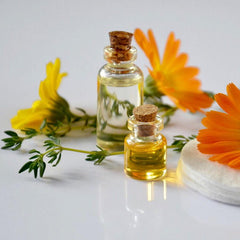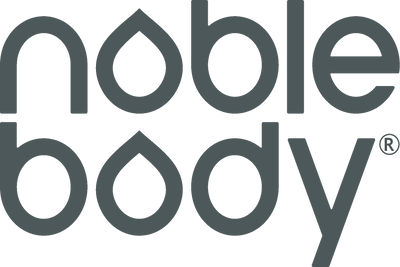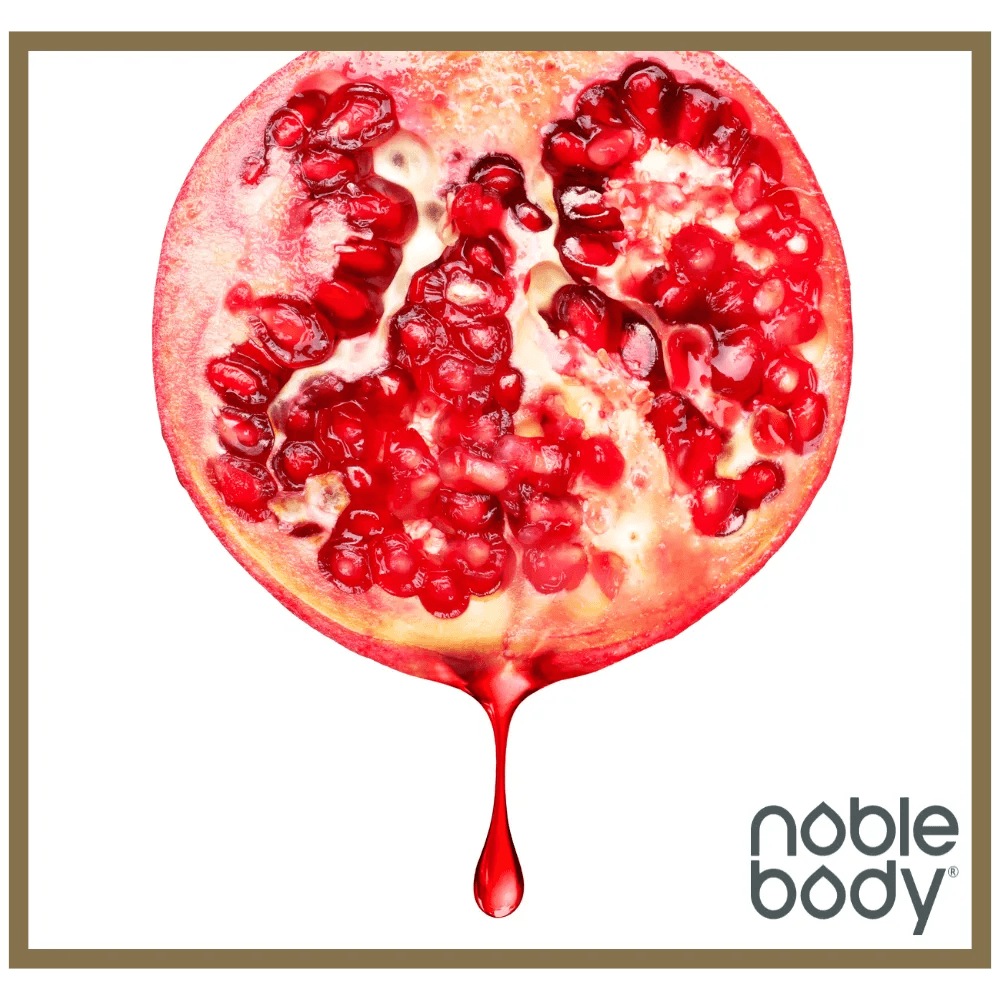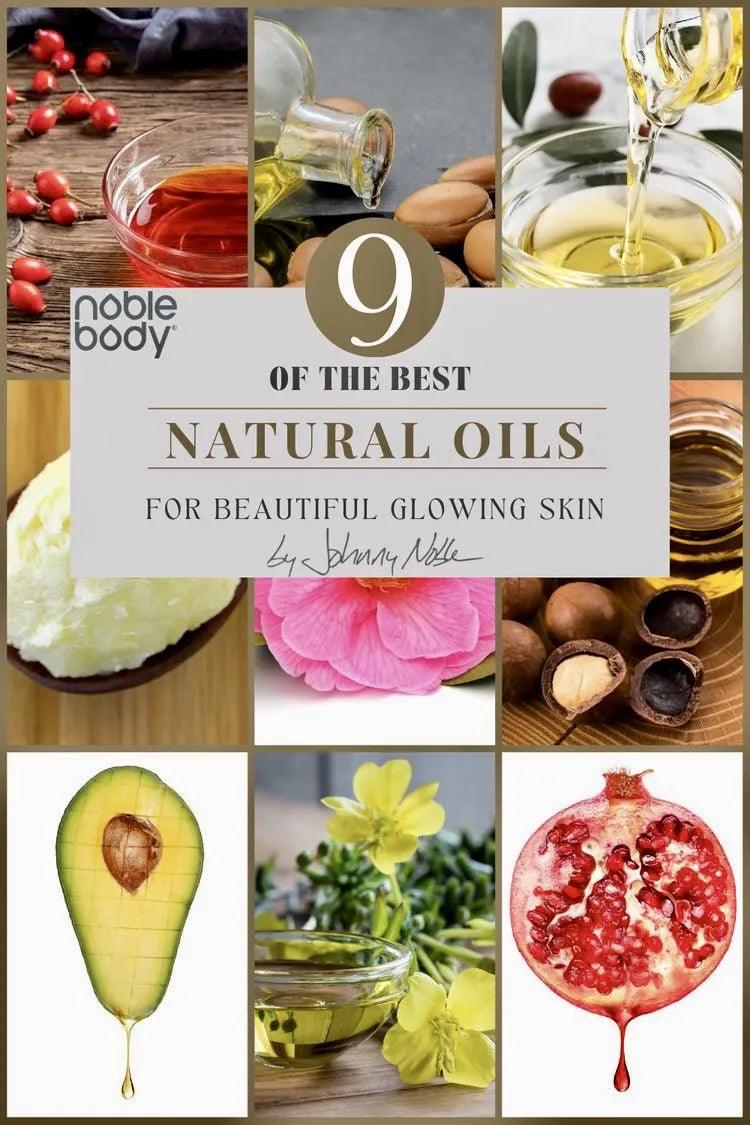Demonized and misunderstood for decades, many people are finally awakening to the amazing benefits of natural oils (aka “carrier oils”) for skin and hair health, beauty, and wellness.
Meanwhile, those that understand them have been benefiting from these compounds for beautiful, handsome, glowing, and healthy skin, not to mention shiny and silky hair and, of course, healthy and shiny beards.
Natural (and essential) oils have been used by humans on their skin and hair for millennia to moisturize, hydrate, nourish, massage, sooth, cleanse, heal, and protect from the sun insects, parasites, as well as for anti-bacterial, anti-fungal, and anti-microbial uses.

Noble Body Luxury Face Oil for Women.
Is there one best oil to use on your face or skin? Great question. Actually there are MANY natural oils to use to achieve healthy and glowing skin. Different oils provide different functions and benefits for our skin. Read on as we dive in…
This article is primarily about natural or carrier oils for topical skin use, but there is considerable overlap with the amazing world of essential oils.
(The term “carrier oil” originated with oils that “carry” and dilute essential oils before application on the skin, but natural oils have many independent benefits and not just to carry and deliver other compounds to skin and hair).
FACE OILS: SKIN SUPERHEROS OR EVIL VILLAINS?
There are many reasons to use natural oils on our face. They moisturize, hydrate, nourish, diminish wrinkles (aka anti-aging), can diminish acne breakouts, even skin tone, whiten skin, reduce dark spots, and the list goes on.
Using natural oils on the face has exploded in popularity, in spite of much misinformation and misunderstanding. At this point, there are literally hundreds of face oil formulas, mostly directed at the women’s markets.
Commonly called “Face (or Facial) Oils”, it’s simply another use for these amazing natural compounds. Most face oil formulas are natural oil blends that perform certain functions. The formulas can also include other oil soluble (anhydrous, without water) cosmetic ingredients and skin-friendly botanical extracts.
Cosmetic suppliers have been working overtime to produce high quality and innovative compounds (usually natural botanical extracts) that are fantastic for skin health and beauty.
Recently, Noble Body and some other companies have taken the plunge and produced high-quality face oil products for the men’s market. The word is out, and the oil genie is never going back into the bottle.

Check out the Noble Body Men's and Women's Face Oil Products here:
https://noble-body.com/products/face-oil-for-men
https://noble-body.com/products/face-oil-for-women
(Also note that skincare doesn’t stop at your face, so any natural or essential oil that benefits your face will also work its wonders on the rest of your body.)
NATURAL OILS vs ESSENTIAL OILS: WHAT IS THE DIFFERENCE?
FIRST, ESSENTIAL OILS:
Essential oils are concentrated, hydrophobic (repellent to water) and volatile (dissipate or evaporate) extracts from plants/botanicals including flowers, leaves, berries, barks, peels, resins, woods, seeds roots, and rhizomes. They typically evaporate completely if left to the open air. (Natural oils are not volatile; they don’t evaporate like essential oils).
The word “essential” is because the oils contain the essence of the plant/botanical material from which it was extracted, (including the material’s fragrance). Examples include: peppermint, frankincense, myrrh, eucalyptus, lavender, vetiver, clove, tea tree, cedarwood, cinnamon, and many more. There’s even a coffee essential oil. Yes, coffee!

Essential oils are generally extracted by a distillation process, such as steam distillation. Other methods include expression and solvent extraction depending on the type of botanical material.
Essential oils are known for their powerful and distinctive aroma profiles. MOST natural oils do not have a natural aroma, but some are stronger smelling, and others have a mild, natural, even nutty/earthy or organic aroma.
Essential oils have very diverse chemical properties and many don’t have much in common. For instance, think of lavender flowers compared to myrrh or benzoin tree resins. This one example shows the diversity of these compounds. Not just diverse in fragrance, but at the molecular level.
(Of course there are exceptions, but essential oils are typically too strong and concentrated to put directly on the skin. This is where the “carrier” part of natural oils comes in. Natural oils can be used to dilute and “carry” the essential oils so it’s safe for direct application to skin and hair.)

NEXT, NATURAL OILS:
Natural oils, on the other hand, are typically composed of an array of fatty acids that occur naturally in vegetable and animal oils. These oils are usually extracted from seeds, nuts, kernels, or fruits and include argan, avocado, Kukui, coconut, shea, apricot, almond, meadowfoam, jojoba, pomegranate, and many others.
The fatty acid profiles of these oils usually differ in feel, texture, absorption rate, weight, pore clogging potential, and many other factors. Think about how 100% coconut oil feels on your skin as compared to lighter, dryer, and fast absorbing oils like kukui nut or sweet almond.
NATURAL FATS/OILS FROM ANIMALS
Tallow is a traditional oil used for many generations by our ancestors for skin care. It is a rendered animal oil typically from cows or sheep. Tallow has an established and even growing following, but of course it’s not vegan or “cruelty free.” In addition, it can have a very definite animal or meat smell that can be masked with essential oils. Tallow is mostly composed of oleic, palmitic, and stearic fatty acids.
Emu oil is another popular natural oil extracted from the adipose tissue harvested from a subspecies of the emu, a large flightless bird indigenous to Australia. The primary fatty acids are oleic and linoleic acids. Obviously, it’s not a vegan or cruelty free natural oil.
Lanolin is a wax secreted by the sebaceous glands of wool bearing animals, mostly sheep. It’s also known as ‘wool wax’ or ‘wool grease’. It has been used by humans for centuries and harvested from domestic sheep breeds raised specifically for their wool.
Lanolin is technically not a fat since it lacks glycerides (aka glycerol esters) and primarily is composed of sterol esters. It’s an ingredient in the ubiquitous “Aquaphor” that was developed between WWI and WWII as a wound healer/infection fighter. It’s technically cruelty free, but obviously an animal extracted compound.
(*Note: Noble Body does not use tallow, emu oil, or lanolin in any of its formulations.)

FATTY ACIDS FOUND IN NATURAL OILS
Very simply, the fatty acid profile of an oil is where the magic happens. Different fatty acids perform many different functions on and for our skin. And of course, some are more critical than others.
There is a gigantic body of information about naturally occurring fatty acids, but we’re going to render it down to the basics so you don’t fall asleep like you did in 10th grade chemistry class.
Fatty acids are the building blocks of any given oil. The fatty acid profiles of oils can differ dramatically, and some oils have very unique fatty acids that can benefit human skin in various ways.
Obviously, the source botanical material will determine the fatty acid profile of an oil. Compare a pomegranate seed to a coconut. That visual helps you understand how one oil can be so structurally different when compared with another.
Three fatty acids can also combine with a glycerol “backbone” to form a molecule called a triglyceride. The fatty acids that attach to the “backbone” determine the type of oil or butter. There are many other factors related to molecular configurations, double vs single bonds and how that relates to oxidation (rancidity) and many other factors. These advanced topics are for another article.
MOISTURIZER OCCLUSIVE HUMECTANT EMMOLIENT
A quick note on the TYPES of ingredients that go into cosmetic products, such as moisturizers. Each category performs a very specific function on your skin. Broadly speaking, a moisturizer should be formulated to work with the natural oils (sebum, more on this below) and water levels in your skin. Moisturizers can be oils, lotions, creams, or serums.

Moisturizers generally are a balance of the three TYPES of ingredients, emollient, humectant, and occlusive.
Emollient: These ingredients are typically oils, lipids, esters that smooth and soften the skin. Most natural oils are considered emollients, but oils/lipids can also have other properties.
Humectant: These ingredients draw water molecules to themselves. They can draw the water from the air, but if improperly formulated, they can also draw water from your skin causing irritation and dryness. A classic humectant is glycerin. A more modern popular humectant ingredient is hyaluronic acid.
Occlusive: These ingredients form a film or layer on the skin to help prevent water loss from the skin. They can be effective, but they can also feel greasy or waxy and cause clogged pores, exacerbate acne, and other problems, depending on the ingredient.
FATTY FATTY BOOMBALATTY ACIDS
There is a diverse range of fatty acids in natural oils. Some are quite common, and others limited and even quite rare.
LINOLEIC ACID: Considered an “essential fatty acid” that the human body does not produce, so it has to come from outside sources. It’s a superstar to great skin health. It’s a major component in ceramides, which are found in our skin at about 50% by mass. Ceramides are critical to healthy skin function. High linoleic oils include: safflower, rice bran, and sesame oils. (It’s also touted as an acne reducer in some circles, and this seems to be mostly true, but there are not many conclusive studies on this topic.)
OLEIC ACID: It’s not considered an essential fatty acid, because our body produces it and it’s actually found in human sebum. Oils and butters high in oleic acid are moisturizing and regenerating for our skin. They mimic human sebum, are absorbed well into the skin and also offer softening, and anti-inflammatory properties. High oleic oils include: almond, camellia seed, and avocado oils.
STEARIC ACID: Offers great (even semi-occlusive) skin moisture retention, an increase in flexibility, and even skin damage/injury healing and repair. A true champion for great skin health and regeneration. Great sources include the “butters” like mango, cocoa, and shea.
PALMITIC ACID: This fatty acid forms an occlusive layer on our skin and helps protect it from environmental stressors. (Occlusives don’t just come from the cosmetics laboratories, there are many naturally-occurring occlusive natural oil compounds.)
PALMITOLEIC ACID: This amazing fatty acid is one of the building blocks of our skin to help prevent burns, wounds, and scratches. It’s also an active anti-microbial. sea buckthorn and macadamia nut oils are high in palmitoleic acid.
GAMMA LINOLEIC ACID: This is deemed “essential” since our bodies don’t produce it. GLA has fantastic anti-inflammatory properties, healing, and with skin barrier repair. It helps with dry, itchy skin, help retain moisture and also helps with acne prone skin. Sources include the more ‘exotic’ oils such as evening primrose, rosehip, and borage.

THE MORE RARE OR ‘EXOTIC’ FATTY ACIDS
PUNICIC ACID: This incredible fatty acid offers cell regeneration, anti-inflammatory, and anti-microbial properties. It can increase the skin’s elasticity and help repair weather or sun-damaged skin. It is found in pomegranate oil at about 76%, hence that oil’s popularity in natural oil formulations. Punicic acid has also shown promise in preliminary testing as a potent cancer fighter.
RICINOLEIC ACID: This is an oil and alcohol soluble fatty acid found only in castor oil (Ricinus Communis). It is a natural humectant and also offers analgesic, anti-bacterial, and anti-fungal properties. It penetrates skin easily because of its low molecular weight and can be found in many skin, lip, beard, and hair formulations.
GADOLEIC ACID: This is a primary component (~57%) of the popular liquid wax ester, jojoba oil that’s extracted from a Southwest desert shrub. It’s an unsaturated fatty acid that’s also found in cod liver oil.
ERUCIC ACID: It’s a primary component of the brassica family of vegetables (the mustard family of plants and also cruciferous vegetables). It’s also present in jojoba oil at a hefty 20%. Because of its molecular structure, it’s considered a more “grippy” (as opposed to “slippy”) fatty acid. In other words, it does not offer the smooth slip and slide of many cosmetics products.
LET’S PAY HOMAGE TO THE NATURAL OIL PIONEERS
Despite the many years of misinformation about natural oils, empires have been built using these natural substances. For example, Shu Uemura and Linda Rodin are just two of the modern pioneers in the natural-oils arena.
Shu Uemura (the man) launched an oil-based product in 1968 called “Unmask” designed specifically for removal of heavy waterproof makeup used in the Hollywood/acting realm. Later, Shu Uemura (the company) exploded into an international powerhouse known especially for its line of oil-based cleansing products.

Linda Rodin launched her first product, a face oil called “Olio Lusso” in 2007. She had been making her formulations in a coffee cup for personal use and giving it to her friends and colleagues who encouraged her to market her amazing creation. Her company blossomed into a ubiquitous force known for natural oil formulations with signature jasmine and neroli fragrances.
A NOTE ON THE “OIL CLEANSING METHOD”
Cleansing with oils? W…T…F?! Yes, you read that correctly. You can and many people do cleanse their faces with natural oils. The concept is so highly evolved that there is a website called: theoilcleansingmethod.com
In addition, Shu Uemura’s company was originally founded with an oil based cleansing product that grew into a powerhouse line of oil cleansers.
So how does it work, you ask? It’s simple. Oil dissolves oil. Natural oils are perfect cleansers to cleanse stubborn pores of their oil/sebum based clogs.
NOW LET’S TALK ABOUT SEBUM
No, not that. Get your head out of the Gutter. … “SEE-BUM”
Guess what sebum really is? It’s a naturally occurring oily/waxy matter that helps keep your skin lubricated, hydrated, and protected. Read that again. IT’S AN OIL. Interesting! Using natural oils on skin that secretes an oil is starting to make more sense, is it not?
Sebum is secreted by microscopic endocrine glands called “sebaceous glands”. They occur in the greatest concentration on the face and scalp and are on all parts of the body except palms and soles.
The topic of sebum can be an ungodly long treatise. Simply stated, most people are doing things to their skin that fights against the human skin’s natural ability to keep itself moisturized and healthy naturally via the sebum-endocrine system.
When you think about it, many products that people use, on the face especially are doing more harm than good. Soaps, cleansers, toners, serums, lotions and similar products are usually working against the natural and healthy sebum levels of the skin. (And of course numerous ingredients in makeup that certainly are not doing your skin any good…)
That’s a primary reason many people have seen the light and switched to natural oils for skincare. They usually work in tandem with the natural sebum levels without disrupting or stripping it away, essentially causing injury to the skin.
(There are several related medical conditions that involve sebum—including acne, sebaceous cysts, hyperplasia, and sebaceous adenoma. These are usually attributable to overactive sebaceous glands, which produce excess sebum. But such topics are outside the scope of this discussion)

DISPELLING THE RELENTLESS OIL CONSPIRACY THEORIES
There are many assertions about natural oils that are just wrong. Many times, it results from lumping all natural-oil compounds into one category, when actually there are many different types of oils that can (and do) differ dramatically.
Very simply, you can’t lump all oils together and make assertions like: “oils are heavy;” or “all oils clog pores;” or “oils will make my face greasy.” These wrong, blanket assertions do not account for the diversity among many different natural compounds.
Here’s a great example: jojoba oil is so different from coconut oil, they shouldn’t even be placed in the same category. (In fact, jojoba oil, is actually a liquid wax ester that most closely mirrors the composition of human sebum. It’s also extremely stable and has a very long shelf life. 3 + years if properly stored. It’s extracted from a Southwestern desert shrub. Fascinating stuff, I know.)
THE “OIL-FREE” NONSENSE
The term “oil-free” originated in the cosmetics industry as a marketing gimmick. It’s that simple. It’s really an open-ended and largely meaningless term that demonized all natural oils and created a perception that “oils” are somehow bad, yet ingredients that can be chemically categorized as “oils” are in nearly everything.
Over the years, the “oil-free” claim has morphed into a monster that unaware people look for in products when it really means nothing. If anything, “oil free” is a net negative in just about any legitimate, effective skincare product.
The explosion of oil-based products on the market are conclusive proof that any “oil-free” claim is meaningless nonsense.
THE GREASY/OILY SKIN BOOGIE MAN
Many people think that any oil will result in greasy/oily skin. Wrong! There is a great diversity of natural oils and some really are heavier and greasier. For instance, pure coconut oil is relatively heavy and can be greasy. Some people absolutely love it. For others, it feels greasy and clogs their pores. Other oils are incredibly light, fast absorbing, and skin friendly, such as kukui and rosehip -- absolute miracle oils.

THE PORE CLOGGER MYTH
When assessing whether an oil (or other cosmetic compound) will clog pores, the correct term is “comedogenic rating.” Will all oils clog your pores? Absolutely not. Will some of them? Yes, of course they can. The comedogenic rating (“C” rating) is a sliding 0 (NOT comedogenic) to 5 (HIGHLY comedogenic) scale.
For example, shea (butter or oil/olein) has a C rating of 0/5. Coconut oil has a C rating of 4/5. A huge difference if you’re thinking about using it undiluted on your face.
Any face (or body) oil that’s properly formulated will surely take the C rating into account as a critical factor. But remember, some oils may have a higher C rating, but they impart other incredible benefits (discussed below) that are worthy of some experimentation.
The important factor in any face oil formulation is a balanced, lower C rating to greatly reduce the risk of clogged pores. In fact, a prime objective for any face oil (or natural oil) formulation is to help keep pores healthy, clean, and clear.
A NOTE ON ‘FRACTIONATION’
Fractionated, or fractionation means just that. Some oils such as coconut or shea that can be solid in their natural state can be fractionated to several separate molecules. Common and very popular examples in the cosmetics industry include caprylic/capric triglycerides (from coconut oil) or shea olein, the liquid form of shea butter. (MCT, or “medium chain triglycerides) is another form of fractionated oil from coconut oil).
THE (SOMEWHAT) IRRATIONAL “BUT I HAVE ACNE!” FEAR
Acne is horrible. There’s no way to sugarcoat it. There are many different factors that impact acne including age, diet, genetics, stress, and hormonal factors to name just a handful.
To make a blanket statement that “oils make acne worse” though, is just wrong. Of course some oils (with a higher C rating especially) can contribute to acne, but there are many natural compounds (natural and essential oils) that have been proven to actually reduce acne because of their pore cleansing and anti-bacterial/microbial properties.
THE “ONLY IN WINTER” MYTH
“Only in cold weather” arose as a variation of the “oils are heavy/greasy” myth. It’s true that skin needs more moisturizing in the harsh winters, but it’s nonsensical to assert that you can’t or shouldn’t use natural oils for the other three seasons. Natural oils can and should be used on the skin every day of the year.
THE “LOTIONS/SERUMS ARE BETTER” CANARD
No. They’re not. Most lotions and serums suck. The slick branding and marketing only obscure the cheap, inferior product in the bottle. Torture yourself and read the ingredient list of any lotion. You’ll be hard pressed to find much in there that resembles a “natural” formulation. Sure, there are some better lotion formulas on the market, but, many are horrible and they don’t do much to contribute to the overall health of your skin.
Have you ever applied a “high quality” lotion or cream only to realize your skin is dry and flaky two hours later? That’s because it really didn’t do anything (except to maybe make you believe that you “moisturized” your face.)
Here’s why:
First, lotions are mostly water.
Also remember that since lotions are mostly water, they have to contain the powerful anti-bacterial/microbial chemicals, many of which are harmful and include the dreaded endocrine disrupting chemicals, such as the paraben family of preservatives.
Next, lotions contain a high percentage of “filler” or “feel” ingredients. They impart a certain feel to the skin, but don’t really provide any net positive or longer lasting skin health benefits.

THE MANY BENEFITS OF NATURAL OILS
Natural oils have many incredible benefits for our skin. It’s skin superfood. Compared to most of your other choices, natural oils are the clear winner to maintain overall skin health and wellness.
Oil formulations are typically “anhydrous,” which means they contain no water. That eliminates the need for the powerful synthetic preservatives. Also, many oils and essential oils have natural antibacterial/microbial properties. In addition, there are natural oil soluble preservatives such as the one in the Noble Body formulas that are extracted from elderberry. It kills bacteria AND it’s great for your skin.
Slick cosmetic marketing targets different compounds and touts their magical properties for your skin such as vitamins C,E, A, B, beta carotene, squalene, ceramides, etc. But did you know that many of these compounds are naturally present in many different types of oils?
ESSENTIAL FATTY ACIDS (EFAs): As detailed above, our bodies don’t produce the EFAs, so it’s important to topically apply them regularly to maintain healthy, glowing skin. EFAs help regulate the cell membrane and keep water and vital nutrients within our skin cells while pushing out the bad actors, like cell waste. (It’s also possible and important to obtain EFAs via a balanced diet.)
VITAMINS: Natural oils are loaded with vitamins that our skin can use and benefit greatly from. A few examples: Avocado oil is high in vitamins A, D, and E; Rice bran oil is high in vitamins B and E; Rosehip oil contains vitamin C and beta-carotene, the precursor to vitamin A; Argan oil is high in vitamin E, and many more examples.
PHYTOSTEROLS (plant sterols): These are naturally-ocurring substances from plants and botanicals that are structurally related to cholesterol. According to the Linus Pauling Institute, the highest concentrations of total phytosterols are found in unrefined plant (natural) oils.
These compounds perform amazing functions for our skin including: reducing redness/inflammation, soothing dry skin; exhibiting cortisone like effects, have antioxidant, anti-microbial, antiseptic, analgesic, anti-fungal properties, and even helping with healing and cell regeneration.
POLYPHENOLS: These compounds are ubiquitous in nature and we absorb them via our diets and also topically (with the right compounds). They offer amazing benefits to cosmetic products and fall into three major categories: flavonoids, catechins, and lignans. Polyphenol compounds can have antioxidant, anti-reddening, healing, skin repair, wound/burn healing, and many other positive and skin-friendly properties.
WRAPPING IT UP… IN OILS
If you’re not using and benefitting from the many available natural oil compounds on the market, you are truly missing out. Fantastic and glowing skin is within your grasp. The first step is understanding that most of what you’ve been told about natural oil compounds is probably wrong. The times, as they say, are changing.
If you have any questions on natural or essential oils, feel free to email me at: support@noble-body.com
With pure and healthy regards. Johnny Noble.
Copyright Noble Body LLC 2023. All Rights Reserved.



